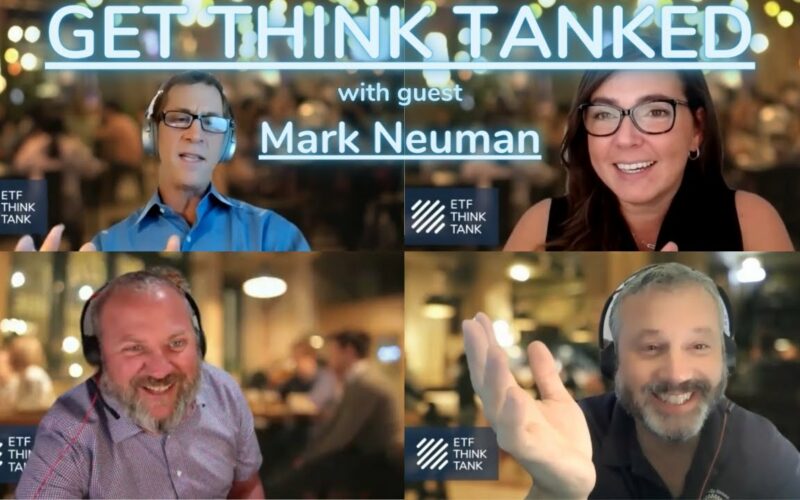Tax efficiency is a key trait of the ETF wrapper. But do you know how tax friendly your ETF of choice is??
By design, all ETFs are tax efficient relative to other pooled investments (such as mutual funds) thanks to their unique in-kind creation/redemption mechanism. It allows ETFs to be thoughtful when transacting with authorized participants, passing through the lowest costs basis holdings to the APs throughout the year, increasing a portfolio’s cost basis and minimizing chances of issuing capital gains.
While this tax efficiency is universally true of all ETFs, there are key tax treatment differences between ETFs structured as regulated investment companies under the 1940 Investment Act and those set up as 1933 Securities Act funds.
Protection & Institutional Appeal
There are four basic ETF structure possibilities from a taxation perspective (excluding ETNs):
- Regulated Investment Company (’40 Act fund)
- Grantor Trust (’33 Act fund)
- Publicly Traded Partnership or Commodity Pools (’33 Act fund)
- Regular Corporation (like a stock)
Most ETFs are ’40 Act funds, or open-ended funds. These ETFs are built around rules governing diversification, distributions, and what’s known as character of tax income.
Essentially, a ’40 Act ETF must be diversified, share distributions regularly, and must generate at least 90% “good income” associated with securities listed on a public exchange. That means ’40 Act funds, by design, must avoid investing in assets regulators deem too risky for the retail crowd (things like futures/commodities/bitcoin derivatives), which generate “bad income”.
These restrictions make ’40 Act funds great vehicles for equities and fixed income, but trickier wrappers for packaging assets like commodities and futures, which tend to be the realm of the ’33 Act funds – grantor trusts (which are physical trusts delivering access to spot price) and publicly traded partnerships or commodity pools (which are futures-based portfolios).
Accessing these “riskier” assets in a ’40 Act structure can be done, of course, but it requires the use of a Cayman Island subsidiary to access the position, where it’s the entity, not the underlying, that’s looked at for quality of income purposes. In these funds, the allocation to the commodity/futures through the subsidiary can’t exceed 25% of the portfolio at the end of each quarter due to diversification rules, so the remainder of the portfolio often sits in cash and cash equivalents. That’s largely why ’40 Act commodities/futures ETFs aren’t considered as pureplay access to these assets.
This is all done in the name of investor protection, none of which applies in the ’33 Act fund structures. In the asset gathering race, it can be a game changer to opt for one over the other, says Aisha Hunt, principal at Kelley Hunt, an asset management law firm.
“Many institutional investors may have mandates to make greater allocations to ’40 Act funds because they provide stronger investor protections,” Hunt says. “In a ’33 Act fund, there’s no board of directors, for example, less governance oversight. There aren’t the same types of investor protections.”
That gives ’33 Act funds the reputation of being riskier investments, she says, making them a harder sell among institutions.
During tax bill time, these structural differences also have notable implications. Here’s what to remember, according to tax expert Jay Laurila, partner at Cohen & Company:
- ’40 Act ETFs offer tax simplicity
In any ’40 Act ETF, the rules are simple when it comes to taxation: If you hold for more than 12 months, you are faced with long-term capital gains taxes currently at 20%, and any distributions made are taxed as ordinary income, where the highest marginal rate currently sits at 37%. A shorter holding period would also be taxed as ordinary income.
The good news here is that, from an investor education or issuer messaging perspective, taxation is simple to communicate. The not-so-good news is that ordinary income tax rates are among the highest possible rates an ETF investor can be faced with.
“With regulated investment companies (ETFs), people know what they are going to get: distributions at the end of the year, taxed as ordinary income. But the highest marginal rate in the US is 37%,” Laurila says.
Compare that rate to long-term capital gains taxed at about 20%; the US corporate tax rate at 21%; and qualified dividends taxed at 20%. “The 37% is clearly the highest rate, and that’s what’s going to happen with some of these funds.”
- ’33 Act ETFs are tax friendlier but involve paperwork
Among the ’33 Act fund structures there are two different tax treatments.
The first is the grantor trust, which can only be used for spot-price access, where portfolio manager discretion never comes into play – think a physical gold fund, for example, holding bars of gold in a London vault.
The IRS views an investment in this type of structure as akin to holding the actual underlying commodity, so grantor trusts are taxed as collectibles: short term gains are taxed as ordinary income, but long-term gains are taxed at 28%.
The second wrapper is the commodity pool, or publicly traded partnership, where diversification, income type and distribution rules don’t apply. These futures-based ETFs can be pureplay, and trade futures contracts as they wish and keep proceeds in the fund without having to share distributions because they don’t have to comply with ’40 Act rules, but all under the CFTC instead.
The caveat is that ’33 Act wrappers issue K-1s (for the partnerships) and investment trust statements (for the grantor trusts).
To most investors, K-1s and trust statements are a tax paperwork headache because it typically doesn’t reach investors until March (late) and can mean you are faced with a tax bill whether you sold your position or not because K-1s are required to mark to market any gains or losses.
The benefit of these forms is that they confirm tax benefits relative to other wrappers for everyone in the fund, including short-term holders. ETFs that deliver K-1s and statements are subject to a blended 60/40 long-term/short-term tax rate, which today are 28% (for collectibles) and 37%, respectively.
“That blended rate for a ’33 Act fund could be a direct savings to investors relative to a similar exposure achieved through a ’40 Act vehicle,” Laurila says.
- The regular corporation structure offers flexibility for a price
The benefits of an ETF set up as a regular corporation is that it doesn’t have to share distributions, and it doesn’t need to comply with diversification rules.
But in this structure, there are two layers of taxation, unlike in the other 3 structures, one at the fund level and one at the investor level. The fund itself faces a 21% tax rate, and any distributions made are taxed at the ordinary income rate. It’s as if every dollar of income gets taxed twice, Laurila says.
ETF Investing Is About Choices
Each wrapper comes with its own mixed bag of pros and cons when it comes to taxation.
If ’40 Act funds offer investor protections in the form of portfolio guardrails and tax simplicity, it does so at higher tax rates. If ’33 Act funds offer pureplay access to “riskier” assets at friendlier tax rates, it does so with clunky tax paperwork many investors prefer to avoid.
None is superior to the other, just different, which makes your personal objectives and some due diligence key steps in the ETF selection process.
“Of the four ETF structures, as it relates to shareholders, there isn’t one better than the other,” Laurila says. “As an issuer, it depends on who your target shareholder is, what they care about and what you can explain to the marketplace. As an investor, the choice depends on what you want to accomplish”.
Disclosure
All investments involve risk, including possible loss of principal.
This material is provided for informational purposes only and should not be considered an individualized recommendation or personalized investment advice. The investment strategies mentioned may not be suitable for everyone. Each investor needs to review an investment strategy for his or her own particular situation before making any investment decision.
All expressions of opinion are subject to change without notice in reaction to shifting market conditions. Data contained herein from third party providers is obtained from what are considered reliable sources. However, its accuracy, completeness or reliability cannot be guaranteed.
Examples provided are for illustrative purposes only and not intended to be reflective of results you can expect to achieve.
The value of investments and the income from them can go down as well as up and investors may not get back the amounts originally invested, and can be affected by changes in interest rates, in exchange rates, general market conditions, political, social and economic developments and other variable factors. Investment involves risks including but not limited to, possible delays in payments and loss of income or capital. Neither Toroso nor any of its affiliates guarantees any rate of return or the return of capital invested. This commentary material is available for informational purposes only and nothing herein constitutes an offer to sell or a solicitation of an offer to buy any security and nothing herein should be construed as such. All investment strategies and investments involve risk of loss, including the possible loss of all amounts invested, and nothing herein should be construed as a guarantee of any specific outcome or profit. While we have gathered the information presented herein from sources that we believe to be reliable, we cannot guarantee the accuracy or completeness of the information presented and the information presented should not be relied upon as such. Any opinions expressed herein are our opinions and are current only as of the date of distribution, and are subject to change without notice. We disclaim any obligation to provide revised opinions in the event of changed circumstances.
The information in this material is confidential and proprietary and may not be used other than by the intended user. Neither Toroso or its affiliates or any of their officers or employees of Toroso accepts any liability whatsoever for any loss arising from any use of this material or its contents. This material may not be reproduced, distributed or published without prior written permission from Toroso. Distribution of this material may be restricted in certain jurisdictions. Any persons coming into possession of this material should seek advice for details of and observe such restrictions (if any).












